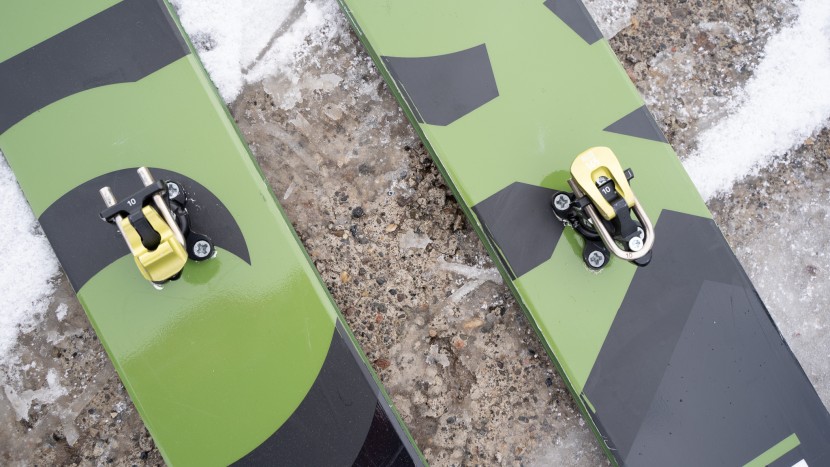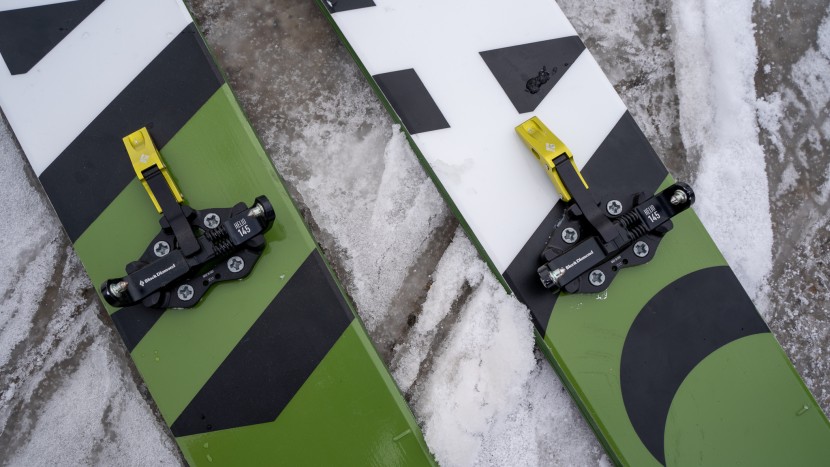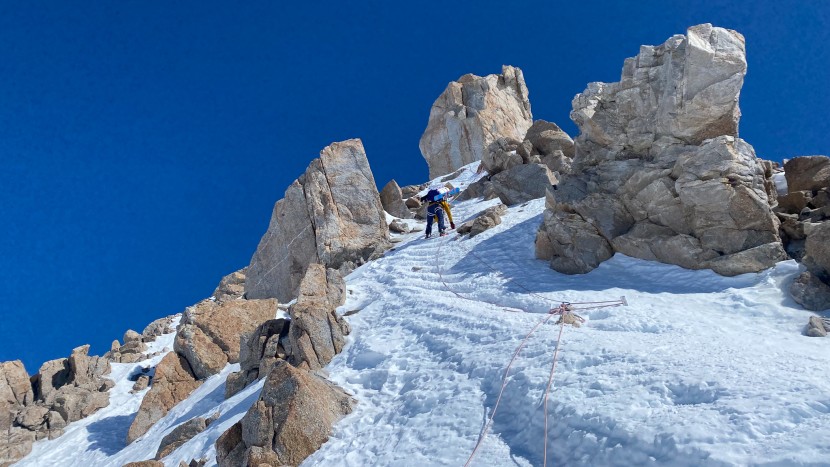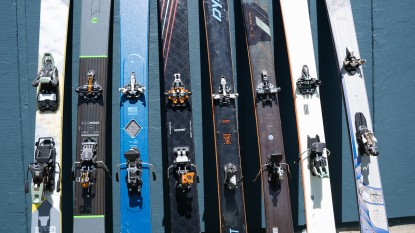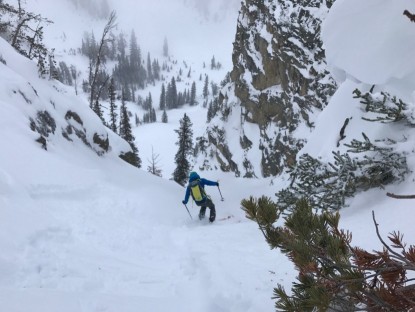ATK Trofeo Review

Our Verdict
Our Analysis and Test Results
The ATK Trofeo is a long-standing design only recently more available in the United States. It is reliable and simple. It is also caught up in some branding and rebranding situations that lend confusion to the shopper's landscape. The pair we tested, for instance, were branded by Black Diamond but are available now as the ATK Trofeo.
Weight
Our tested ATK Trofeo bindings, including the mounting screws, weighed 166 grams per foot. Note that weights are often cited without screws. One could argue that screws should be included because bindings always require screws. Why not include them, then? One could use the same argument on the other side. “All bindings use screws. Their weight is pretty standard”. Tipping the balance of this somewhat pointless argument, though, is the fact that not all bindings use the same number of screws. For this reason, we include the screws in our weight citations.
The ATK Trofeo is light. For what it does, it isn't the lightest and one can now get significantly more performance for nearly the same weight among other products. Nonetheless, we are talking differences of tens of grams. The ice you didn't chip off at the last transition definitely weighs more than the differences we are talking about.
Downhill Performance
The ATK Trofeo holds your boot to the ski in normal to mildly extreme downhill skiing circumstances. What do we mean by "mildly extreme downhill skiing"? We're talking about extreme terrain at mellow speeds or mellow terrain at extreme speeds. Use other bindings (and a rescue/film crew in a nearby helicopter…) for extreme terrain at extreme speeds. It releases in some falls under some amount of force. Performance while skiing and releasing is certainly not the most sophisticated. There is no third party certification backing up the release values and there are no extra springs or release elasticity to enhance retention or elasticity. There are no ski brakes with the ATK Trofeo.
Touring Performance
How do we separate weight from "Touring Performance"? Well, weight is the biggest determinant of uphill efficiency. Everything else that informs touring efficiency gets examined under “Touring Performance”. The ATK Trofeo has excellent toe piece range of motion and the minimal construction collects minimal icing. There are only two heel levels: flat on ski and mid-height.
Ease of Use
Transitions between up and down are typical of all race style bindings. The main thing that differentiates race bindings from one another is the “stickiness” of the heel pin flap. Some bindings are very sticky to keep the flap in place, while others have zero stickiness and instead rely on each step to push and hold down the flap. We like the latter. The Trofeo heel flap has mid-range stickiness.
Durability
We had no issues with the durability of the ATK Trofeo and know of no reliable reports indicating any pattern of issues. AT Bindings are interesting. The lightest gear in other categories will be the least durable. In the case of AT bindings, gear across the entire lighter half of the spectrum (excluding the absolute lightest, purpose built race-only bindings) is more reliable than heavier options.
Should You Buy the ATK Trofeo?
Yes. If you want classic, simple race bindings for backcountry skiing the ATK Trofeo is a great choice. That said, all the other options in this category are also good. You can't really go wrong.
What Other AT Bindings Should You Consider?
In this same weight range and overall design we also like the Plum R170. The 170 comes with an adjustment plate (something you can also add on to the Trofeo). A direct comparison to what we tested here is the Plum R145. Even lighter than the Trofeo, and therefore very limited in backcountry application, is the Plum Race 99. If you like this weight range but want adjustable release and more heel lifter levels, check out the Top PIck Dynafit Superlite 150. The Dynafit weighs 13 grams more but adds those two significant features. With more features, though, comes more potential failure modes.
| Awards | |
|---|---|
| Price | $500 List |
Overall Score  |
|
| Star Rating | |
| Bottom Line | Sturdy skimo race bindings that can readily be pressed into all-around backcountry use |
| Pros | Light, simple, proven |
| Cons | Limited feature set, sticky heel flap |
| Rating Categories | ATK Trofeo |
| Weight (35%) | |
| Downhill Performance (25%) | |
| Touring Performance (20%) | |
| Ease of Use (15%) | |
| Construction Quality (5%) | |
| Specifications | ATK Trofeo |
| Weight of 1 binding and screws, lightest possible configuration (in grams) | 166 |
| Release Value Range | 1 to 10 |
| Brakes? | No |
| Brake Width Options | N/A |
| Weight of 2 bindings, common setup (pounds) | 0.73 |
| Weight of 2 bindings (in grams). Multiple options are noted where we have tested multiple options. | 331 |
| Stack height: average of toe and heel pin height (in mm) | 31 |
| Toe/heel delta: difference in height between heel pins and toe pins (in mm) | 1 |
| Meets ISO/DIN Standard? | No |
| Ski Crampon compatible? | Yes. "Standard" style. Not all crampons will be cross-compatible |




